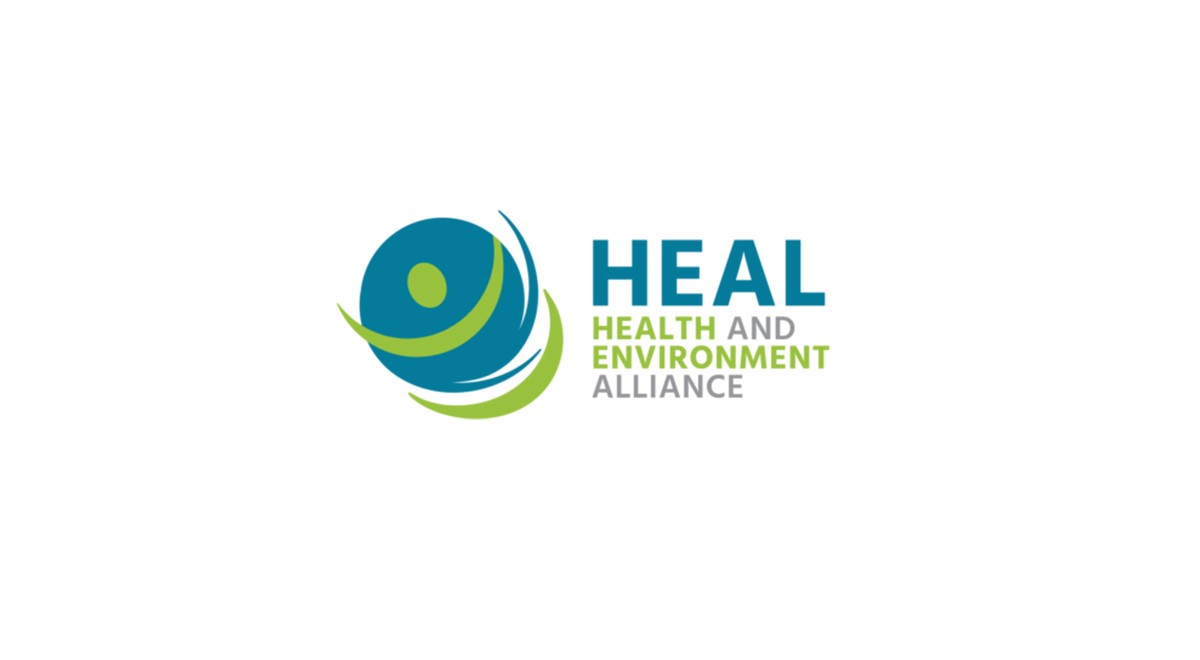To raise awareness of the impacts of PFAS on human health, HEAL is organising a series of three webinars in October 2024, each focusing on a different health impact of PFAS. The first webinar on 10 October focuses on impacts on the immune system. The subsequent webinars will focus on cancer and the impacts of exposure in early life and pregnancy.
Air pollution harms our health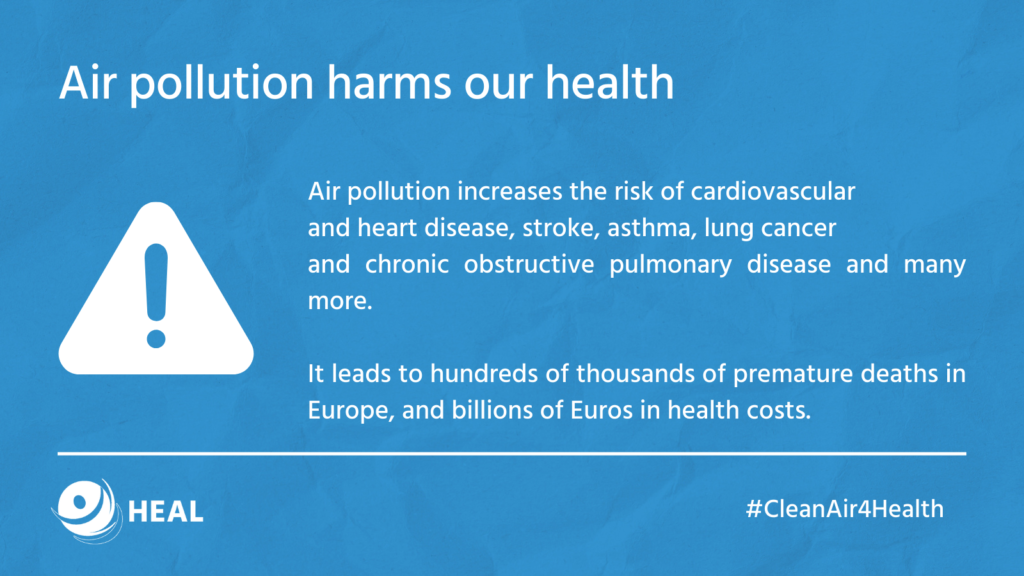 Air pollution is the top environmental threat to health in Europe, leading to around 400,000 premature deaths per year and billions of Euros in health costs.
Air pollution is the top environmental threat to health in Europe, leading to around 400,000 premature deaths per year and billions of Euros in health costs.
According to the European Environment Agency (EEA), 96% of the urban population breathes air which is considered unhealthy by the World Health Organization (WHO). The health impacts from poor air quality are unacceptably high, and they are largely preventable.
We often talk in premature death numbers when showing the devastating impact air pollution has. But air pollution is also a major risk factor for all chronic diseases. Short- and long-term exposure increases the risk of cardiovascular and heart disease, stroke, asthma, chronic obstructive pulmonary disease and lung cancer. Poor air quality is also linked to reduced lung function, impacts on the developing brain and central nervous system, increased risk of preterm birth and reduced birth weight. New studies underline a higher risk of diabetes, obesity and dementia.
And evidence is increasing regarding the harmful effects of low level pollution, pointing to the fact that there is likely no safe level (especially to PM2.5, fine particulate matter) below which negative health effects aren’t seen.
Air pollution can affect everyone, in the entire course of their life, increasing the risk for serious diseases. It is a major cause of suffering, for example through the aggravation of asthma attacks, doctors’ visits, sickness days, leading to high healthcare costs with hundreds of billions of Euros.
The burning of fossil fuels is a major cause of air pollution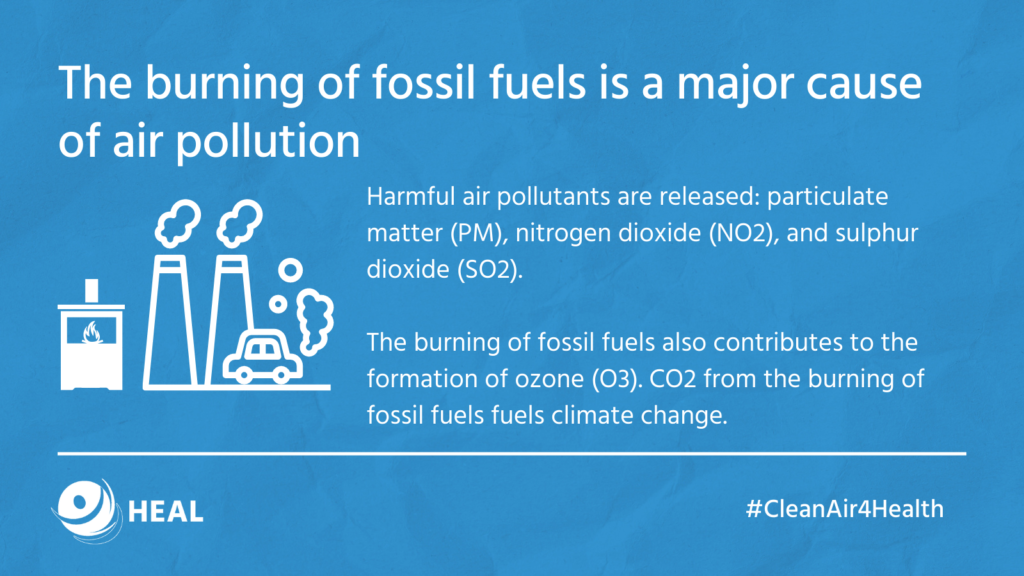 Human activities, especially the burning of fossil fuels for transport, energy production or heating, release air pollutants (as gases, liquids or solids). It often is invisible – but it still harms people’s health, even at low concentrations. Burning fossil fuels also releases CO2, a major factor for climate change (which poses a whole further set of health impacts).
Human activities, especially the burning of fossil fuels for transport, energy production or heating, release air pollutants (as gases, liquids or solids). It often is invisible – but it still harms people’s health, even at low concentrations. Burning fossil fuels also releases CO2, a major factor for climate change (which poses a whole further set of health impacts).
The main pollutants include particulate matter (PM 10), fine particulate matter (PM 2.5), nitrogen dioxide (NO2), ozone (O3 ) and sulphur dioxide (SO2 ). The main sectors of air emissions include road traffic, burning of fossil fuels for energy production and/or heating, biomass burning and agriculture.
Particulate matter is the pollutant with the greatest health impact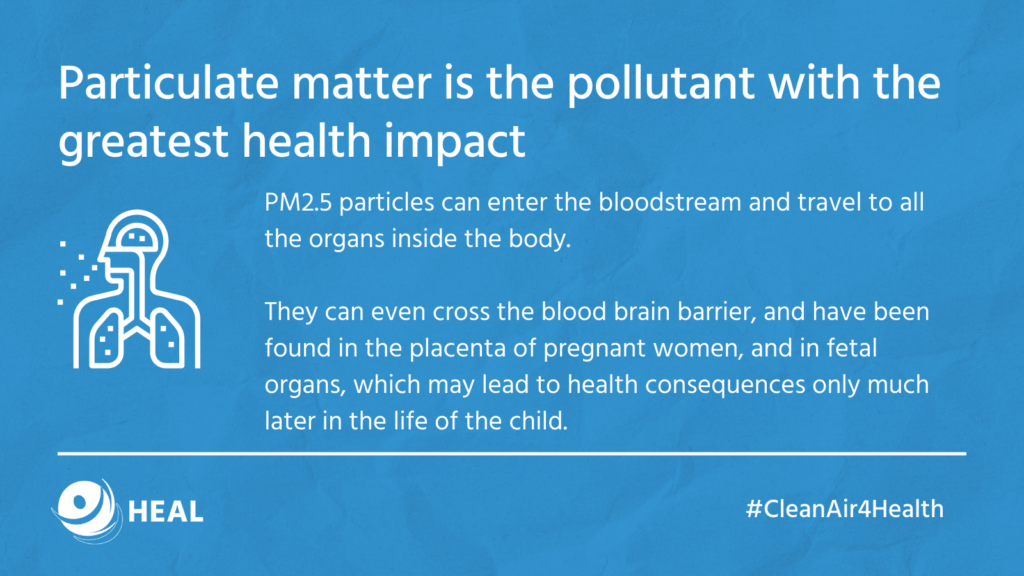 When we breathe, air pollutants enter our body, can get into our lungs, but can also travel further into our body. The smaller the particle, the easier it enters the bloodstream.
When we breathe, air pollutants enter our body, can get into our lungs, but can also travel further into our body. The smaller the particle, the easier it enters the bloodstream.
Thus, PM2.5 leads to the greatest health burden, as these tiny particles can enter the bloodstream and travel to all the organs inside the body. They can even cross the blood brain barrier, and have been found in the placenta of pregnant women, and in fetal organs, which may lead to health consequences only much later in the life of the child.
Everyone is vulnerable to the impacts of air pollution, and some are more at risk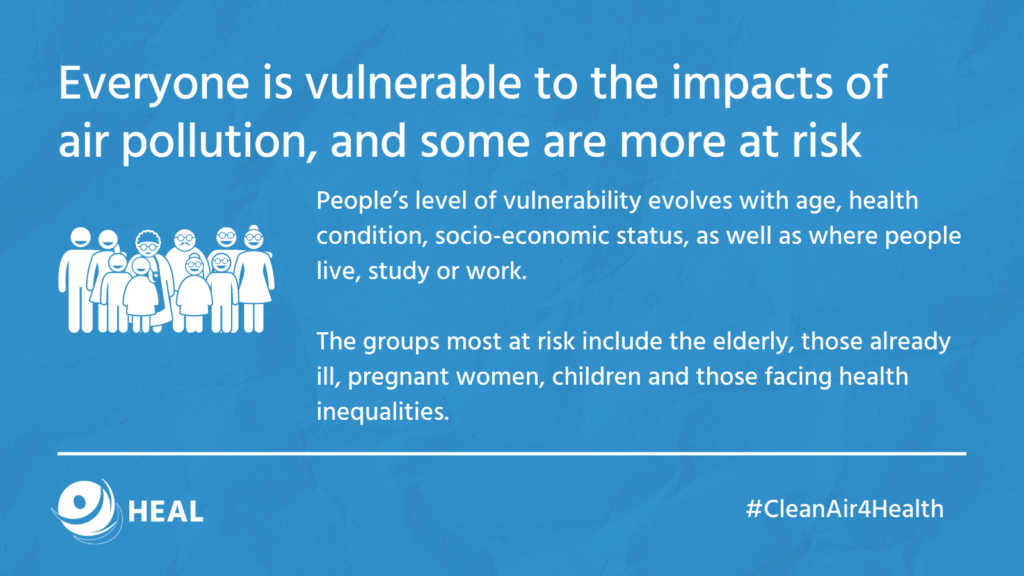 Air pollution is the top environmental risk to health in Europe and everyone is vulnerable to its impacts. People’s level of vulnerability is outside of individual control, and it evolves with age, health condition, socio-economic status, as well as where people live, study or work.
Air pollution is the top environmental risk to health in Europe and everyone is vulnerable to its impacts. People’s level of vulnerability is outside of individual control, and it evolves with age, health condition, socio-economic status, as well as where people live, study or work.
The groups most at risk include the elderly, those already ill, pregnant women, children and those facing health inequalities.
In recent years, new evidence has underlined why children are particularly under threat. Exposure to air pollutants can not only increase the risk of a child developing asthma and the number and severity of asthma attacks, but also affect their learning abilities, as well as the child’s heart, brain and nervous system development. Even children still in the uterus can be affected: a pregnant person breathing unhealthy air can lead to children being born earlier, or with a lower birth weight, which increases the risk of disease decades later.
Science-based EU air quality standards will lead the way for healthier air, everywhere
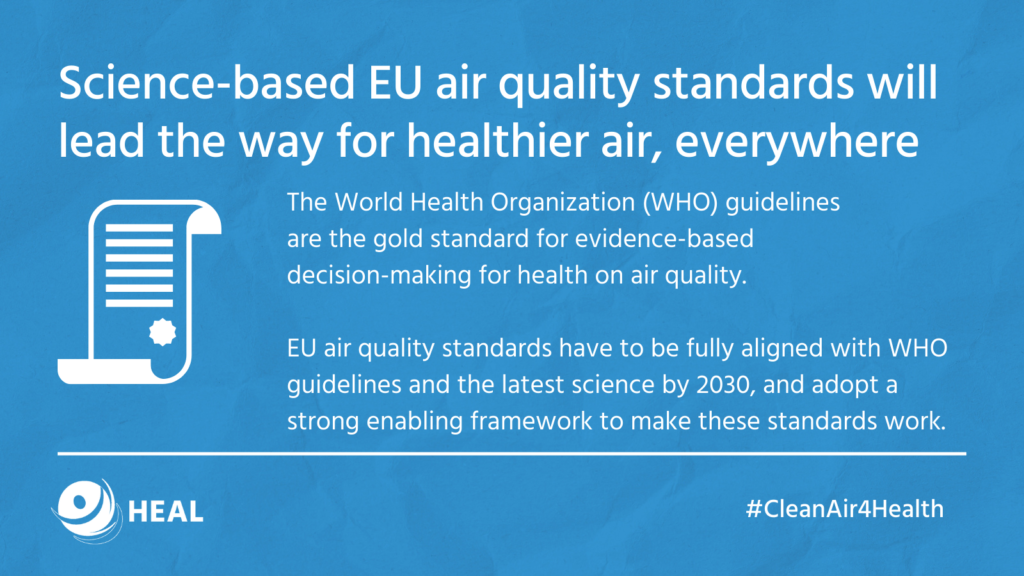 The current revision of the EU’s clean air standards is a not-to-be-missed opportunity for the EU to become a clean air champion in the region and internationally, which can lead to significant improvement in people’s health and the prevention of disease, including reduced rates of cancer, heart and lung disease among others. Strengthened clean air efforts will also support climate mitigation and help the EU reach its climate goals (as the burning of fossil fuels will be tackled).
The current revision of the EU’s clean air standards is a not-to-be-missed opportunity for the EU to become a clean air champion in the region and internationally, which can lead to significant improvement in people’s health and the prevention of disease, including reduced rates of cancer, heart and lung disease among others. Strengthened clean air efforts will also support climate mitigation and help the EU reach its climate goals (as the burning of fossil fuels will be tackled).
There is a huge body of evidence on air pollution and health. Each year, hundreds of studies are being published demonstrating the health harm from poor air quality. The World Health Organization (WHO) regularly reviews all available research on air pollutants` impact on people’s health. Based on this extensive, in-depth review of the scientific literature, in September 2021, WHO published updated guidelines for concentrations for selected air pollutants that significantly lower the levels, meaning that air pollution is harmful at much lower levels than previously understood. WHO guidelines can be considered the gold standard for evidence-based decision-making for health on air quality, as they have health protection at the core, based on the latest science, they are of a high methodological quality and are developed through a transparent, evidence-based review process.
That can only be fully delivered through adopting a truly health-protective Ambient Air Quality package, which includes full alignment of the EU’s legally-binding clean air standards with WHO guidelines and the latest science by 2030, and adopting a strong enabling framework to make these standards work.


